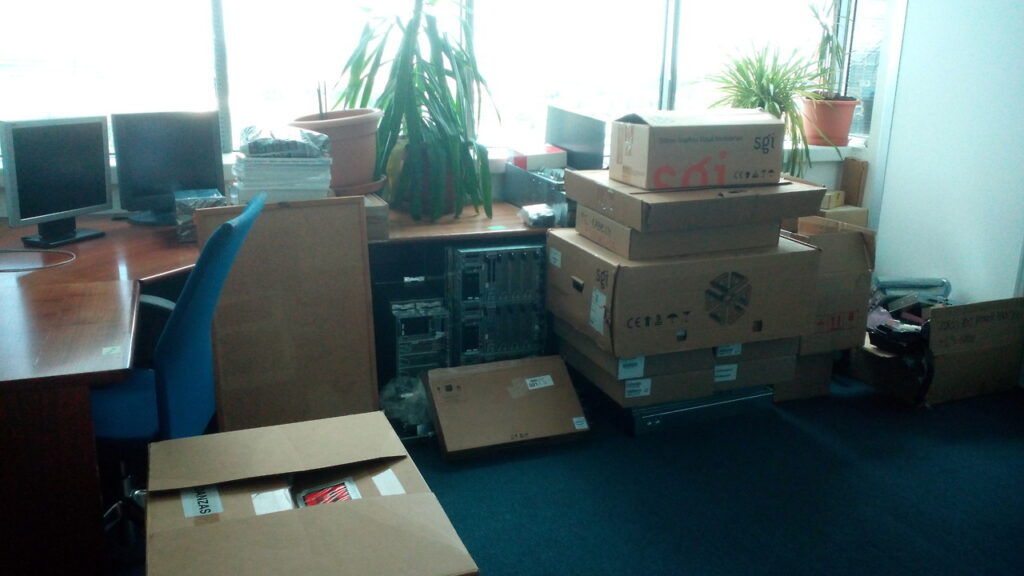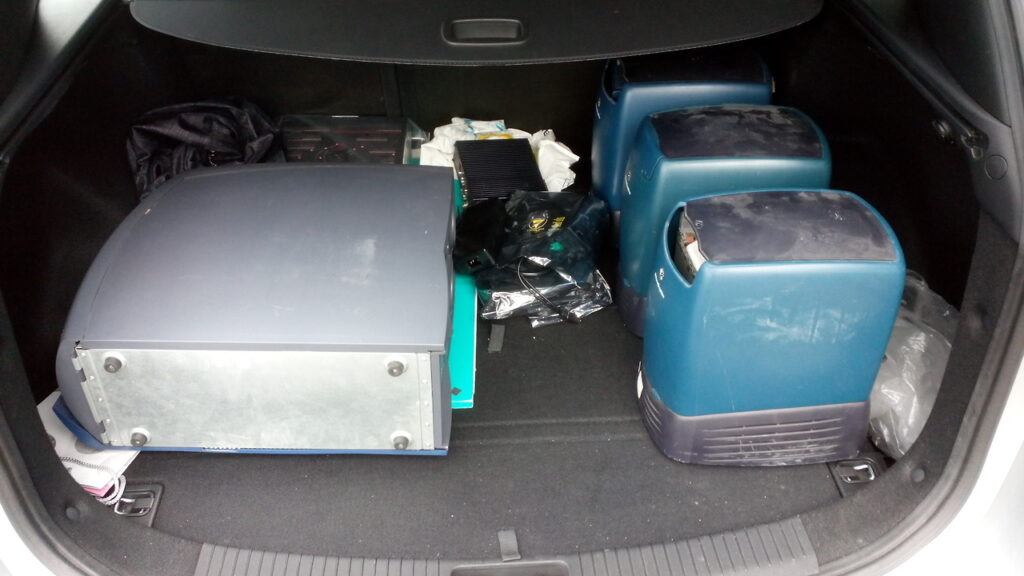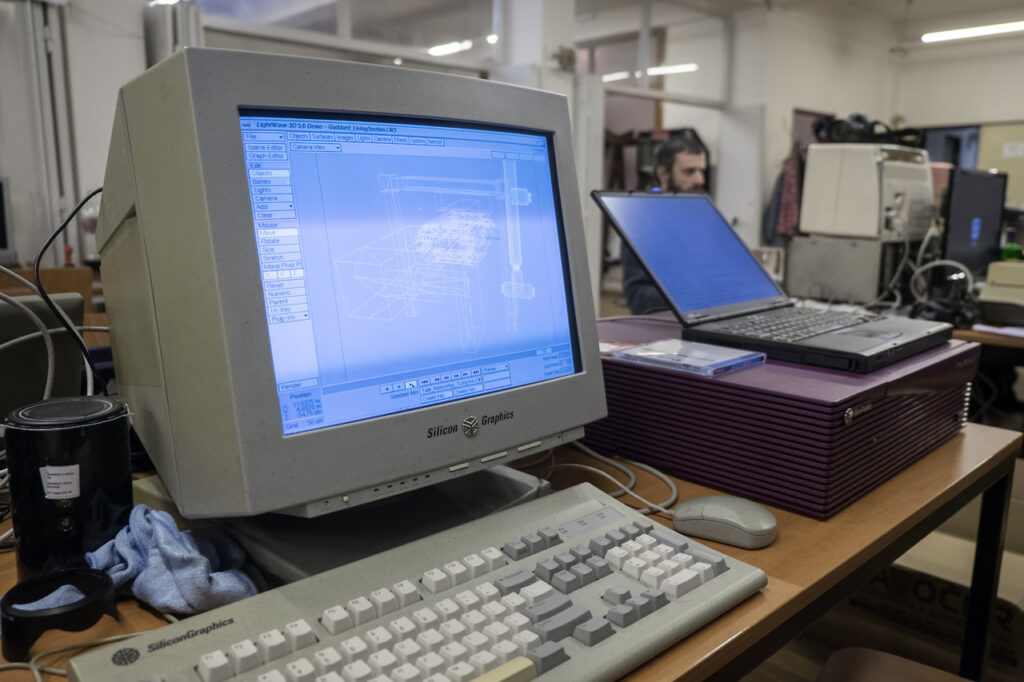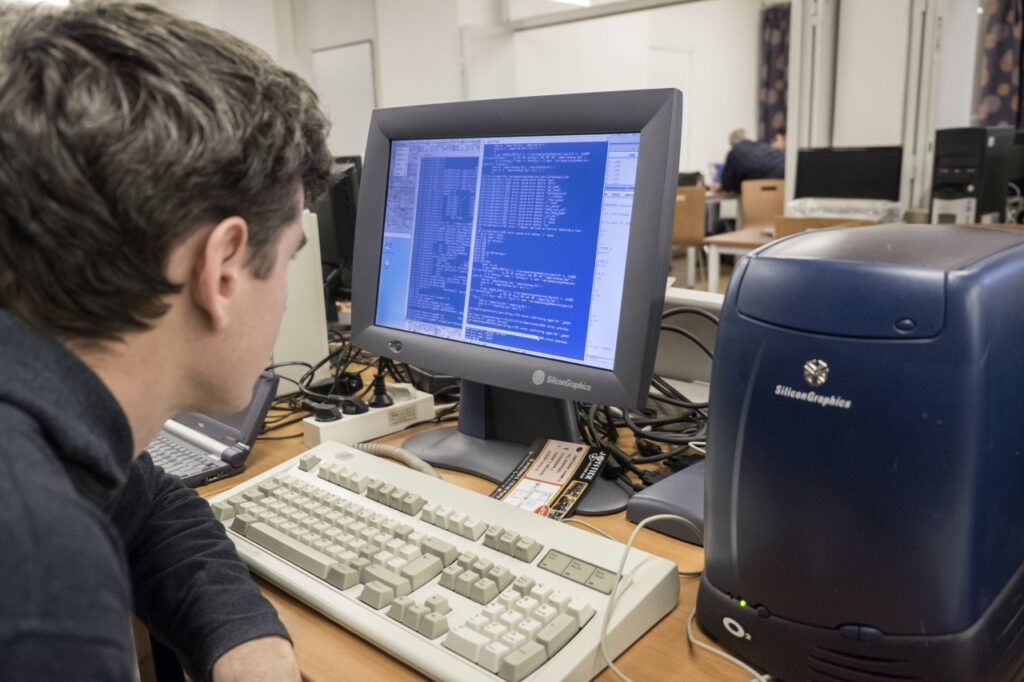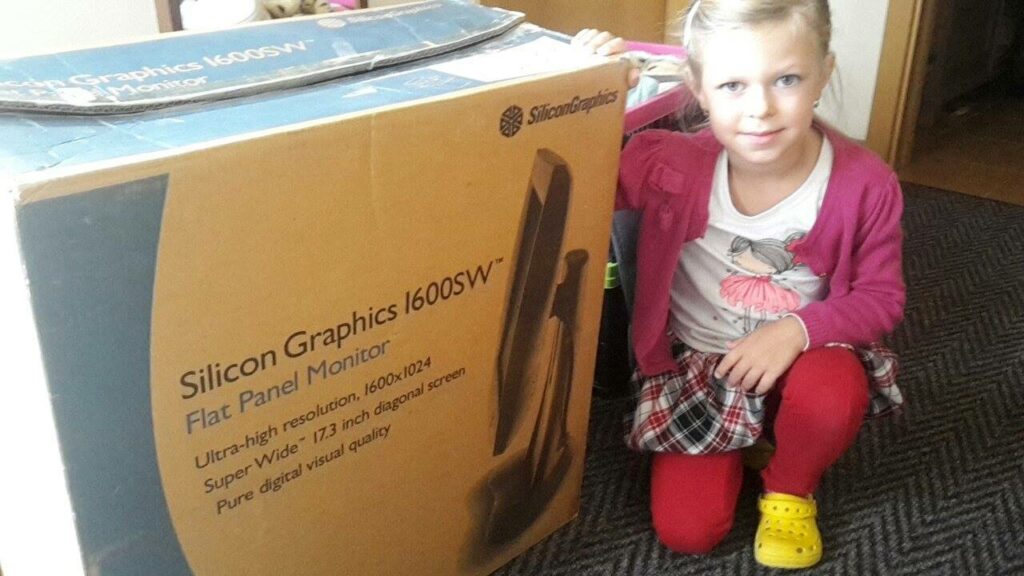New SGI Stuff Directly From SGI
SGI guys are moving to an HPE office building so I’ve visited them to take some junk that would be otherwise thrown away. I took one SGI 320* and three SGI O2 workstations plus few small industrial (non-SGI SGI-branded) computers. There was a lot of old hi-end servers, JBODs, FC switches, NUMA link boxes and so on but the storage capacity of my house is limited so I had to let them there.
*) It’s one of their first x86-based visual workstations. It’s not PC compatible and its architecture is similar to O2. The only supported OSes are Windows NT 4.0 and Windows 2000 and you need a special loader to get Windows running on this system.
